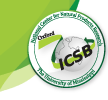Document Type
Oral Presentation
Location
Oxford Convention Center, 102 Ed Perry Boulevard Oxford, MS 38655
Event Website
https://oxfordicsb.org/
Start Date
16-4-2024 11:30 AM
End Date
16-4-2024 12:05 PM
Description
Plants of all growth forms and regeneration strategies were introduced to Jamaica by European slavers and by Enslaved Africans. Some species such as Tamarind used to purify drinking water on ships arrived through purposes of practicality while others that such as yam and plantain were transported as food supplies on the ships or by the Enslaved Africans as tubers for planting in their countries of destination. Tuber crops proved to be invaluable in hurricane prone islands such as Jamaica as the underground tuber was left undamaged by the high winds of the storms. Other crops such as Plantain while not as resistant to storms were brought as they were mainstays of the traditional African diet. Still other plants such as Bissy (Kola Nut) were brought for their medicinal properties Through the Enslaved Africans and the Slave Traders a diverse food and medicinal plantscape emerged on plantations in subsistence plots dubbed Negro Grounds. In looking at these plants of African origin on farms, in kitchen gardens or in food forests one cannot help but note their near complete absence in the formal Jamaican Botanical Gardens at Bath, Castleton and Hope Gardens in comparison to plants from Asia and the Pacific. This paper looks at these plants through the lens of the concept of Botanical Gardens as repositories and places of study of introduced and exotic plants. It argues that Negro grounds and the subsequent kitchen gardens of the free peasantry and contemporary small farmers became refugia of plant stock and gene pools of plants from the mother countries that these displaced Enslaved Africans saw as critical for their cultural continuity and survival.
Recommended Citation
Edwards, Thera, "African plants in Jamaican farms and gardens" (2024). Oxford ICSB. 13.
https://egrove.olemiss.edu/icsb/2024_ICSB/Schedule/13
Publication Date
April 2024
Accessibility Status
Searchable text
Included in
African plants in Jamaican farms and gardens
Oxford Convention Center, 102 Ed Perry Boulevard Oxford, MS 38655
Plants of all growth forms and regeneration strategies were introduced to Jamaica by European slavers and by Enslaved Africans. Some species such as Tamarind used to purify drinking water on ships arrived through purposes of practicality while others that such as yam and plantain were transported as food supplies on the ships or by the Enslaved Africans as tubers for planting in their countries of destination. Tuber crops proved to be invaluable in hurricane prone islands such as Jamaica as the underground tuber was left undamaged by the high winds of the storms. Other crops such as Plantain while not as resistant to storms were brought as they were mainstays of the traditional African diet. Still other plants such as Bissy (Kola Nut) were brought for their medicinal properties Through the Enslaved Africans and the Slave Traders a diverse food and medicinal plantscape emerged on plantations in subsistence plots dubbed Negro Grounds. In looking at these plants of African origin on farms, in kitchen gardens or in food forests one cannot help but note their near complete absence in the formal Jamaican Botanical Gardens at Bath, Castleton and Hope Gardens in comparison to plants from Asia and the Pacific. This paper looks at these plants through the lens of the concept of Botanical Gardens as repositories and places of study of introduced and exotic plants. It argues that Negro grounds and the subsequent kitchen gardens of the free peasantry and contemporary small farmers became refugia of plant stock and gene pools of plants from the mother countries that these displaced Enslaved Africans saw as critical for their cultural continuity and survival.
https://egrove.olemiss.edu/icsb/2024_ICSB/Schedule/13


